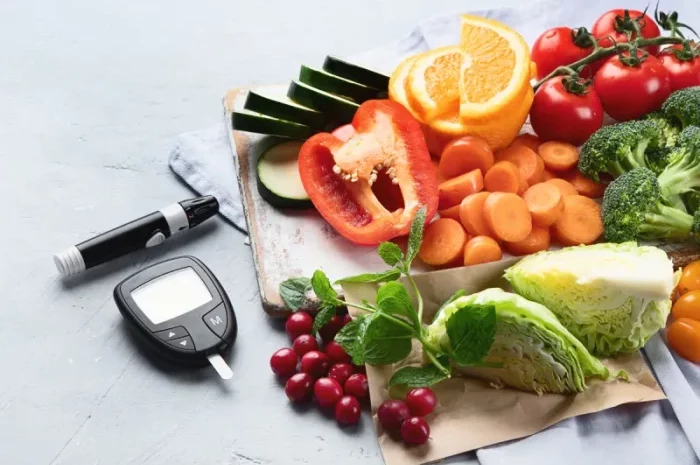Causes and Risk Factors
Insulin resistance can be caused by a combination of genetic and lifestyle factors. Common risk factors include:
Obesity: Excess fat, particularly around the abdomen, is strongly associated with insulin resistance.
Physical Inactivity: Lack of regular physical activity can decrease insulin sensitivity.
Diet: A diet high in refined carbohydrates, sugars, and unhealthy fats can contribute to insulin resistance.
Age: Insulin resistance tends to increase with age.
Genetics: A family history of diabetes or insulin resistance can increase the risk.
Hormonal Imbalances: Conditions such as polycystic ovary syndrome (PCOS) can lead to insulin resistance.
Symptoms of Insulin Resistance
Insulin resistance itself often does not cause noticeable symptoms. However, it can lead to conditions that do have symptoms, such as:
Type 2 Diabetes: Increased thirst, frequent urination, fatigue, and blurred vision.
Metabolic Syndrome: Increased waist circumference, high blood pressure, elevated blood sugar levels, and abnormal cholesterol levels.
Acanthosis Nigricans: Dark, thickened patches of skin, often found in body folds such as the neck and armpits.
Diagnosing Insulin Resistance
Diagnosis typically involves a combination of medical history, physical examination, and laboratory tests. Common tests include:
Fasting Blood Glucose Test: Measures blood sugar levels after fasting.
Oral Glucose Tolerance Test (OGTT): Measures blood sugar levels before and after consuming a sugary drink.
Hemoglobin A1c Test: Measures average blood sugar levels over the past two to three months.
Fasting Insulin Levels: Elevated levels can indicate insulin resistance.
Treating Insulin Resistance
Treating insulin resistance involves a multifaceted approach that includes lifestyle modifications, dietary changes, exercise, and sometimes medication. While there is no “cure” for insulin resistance, it can be managed and even reversed with sustained effort.
Lifestyle Modifications
Weight Loss
Losing weight, especially abdominal fat, is one of the most effective ways to improve insulin sensitivity. Even a modest weight loss of 5-10% of body weight can have a significant impact.
Dietary Changes
A balanced diet that focuses on whole foods can help manage insulin resistance. Key dietary changes include:
Reducing Refined Carbohydrates and Sugars: Minimize consumption of sugary foods, sweetened beverages, and refined grains.
Increasing Fiber Intake: Foods high in fiber, such as vegetables, fruits, legumes, and whole grains, can improve insulin sensitivity.
Choosing Healthy Fats: Opt for sources of unsaturated fats, such as avocados, nuts, seeds, and olive oil, while limiting saturated and trans fats.
Balancing Macronutrients: Ensure a balance of carbohydrates, proteins, and fats in meals to prevent blood sugar spikes.
Regular Physical Activity
Exercise is a powerful tool for improving insulin sensitivity. Both aerobic exercise (e.g., walking, running, cycling) and resistance training (e.g., weightlifting) are beneficial. Aim for at least 150 minutes of moderate-intensity exercise per week, along with strength training exercises at least two days per week.
Managing Stress
Chronic stress can negatively affect insulin sensitivity. Incorporate stress-reducing practices such as mindfulness, meditation, deep breathing exercises, and yoga into your routine.
Adequate Sleep
Poor sleep quality and insufficient sleep can contribute to insulin resistance. Aim for 7-9 hours of quality sleep per night by maintaining a regular sleep schedule and creating a restful sleep environment.
Medications
In some cases, medications may be necessary to manage insulin resistance, especially if lifestyle changes alone are not sufficient. Common medications include:
Metformin: Often prescribed for type 2 diabetes, metformin helps lower blood sugar levels and improve insulin sensitivity.
Thiazolidinediones (TZDs): These medications increase insulin sensitivity in muscle and fat tissues.
GLP-1 Receptor Agonists: These drugs enhance insulin secretion and have beneficial effects on weight loss.
How Long to Improve Insulin Resistance?
The duration to see significant improvements in insulin resistance varies from person to person, depending on factors such as the severity of insulin resistance, adherence to lifestyle changes, and individual metabolic differences.
Short-Term Improvements
Within a Few Days to Weeks: Initial dietary changes, increased physical activity, and weight loss can lead to improvements in blood sugar levels and insulin sensitivity within a few days to weeks. For example, a single session of exercise can improve insulin sensitivity for up to 48 hours.
Medium-Term Improvements
Within a Few Months: Sustained lifestyle modifications can lead to more substantial improvements in insulin sensitivity over a few months. Studies have shown that weight loss of around 5-10% of body weight over a period of three to six months can significantly enhance insulin sensitivity and reduce the risk of developing type 2 diabetes.
Long-Term Improvements
Within Six Months to a Year or More: Long-term adherence to healthy lifestyle changes can lead to lasting improvements in insulin sensitivity. Maintaining a healthy weight, regular physical activity, and a balanced diet can keep insulin resistance at bay and prevent the progression to type 2 diabetes. In some cases, it may take a year or more to achieve optimal insulin sensitivity, especially if significant weight loss is required or if insulin resistance is severe.
Monitoring Progress
Regular monitoring is essential to track progress and make necessary adjustments to your treatment plan. This includes:
Regular Blood Tests: Monitor fasting blood glucose, HbA1c, and lipid profiles to assess improvements in blood sugar control and metabolic health.
Body Measurements: Track weight, waist circumference, and body composition to gauge the effectiveness of lifestyle changes.
Medical Check-Ups: Regular visits to your healthcare provider to review progress, adjust medications if necessary, and address any concerns.
See also: What Does It Mean When Your Body is Insulin Resistant?
Conclusion
Insulin resistance is a manageable condition that requires a comprehensive approach involving lifestyle modifications, dietary changes, regular physical activity, and sometimes medication. The time it takes to see improvements in insulin resistance varies, but with consistent effort, significant progress can be made within a few weeks to months. Long-term adherence to healthy habits is key to maintaining insulin sensitivity and preventing the progression to type 2 diabetes.
If you suspect you have insulin resistance or are at risk, consult with your healthcare provider for proper diagnosis and personalized treatment plan. Early intervention and sustained lifestyle changes can make a significant difference in improving insulin sensitivity and overall health.
Related topics:
What Helps with Insulin Resistance



























